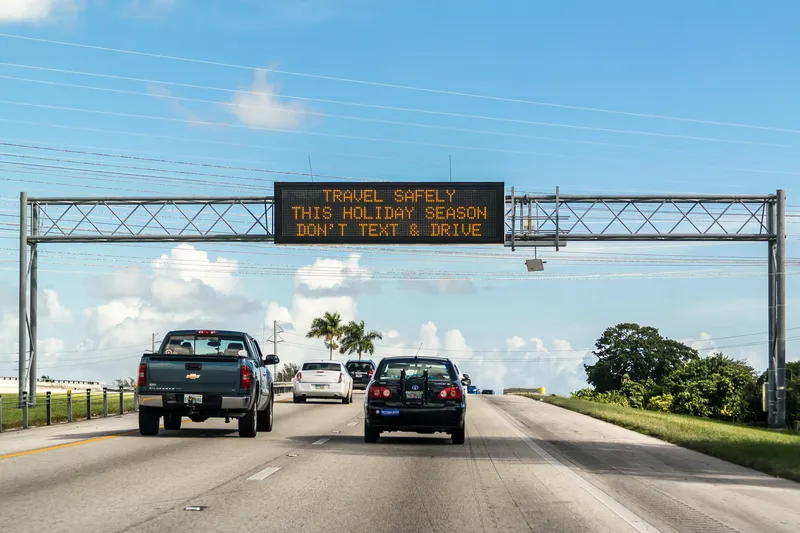Accurate, timely information which eliminates the need to brake quickly when approaching a work zone or other road hazard could prevent crashes and save lives, according to research by the University of Minnesota. Thanks to research by the University of Minnesota, this vision is closer than ever to reality. “In the past fifty years we’ve made great strides in reducing traffic fatalities with technologies that save lives in crashes, like airbags and seat belts,” says M. Imram Hayee, electrical and computer e
March 26, 2013
Read time: 3 mins
Accurate, timely information which eliminates the need to brake quickly when approaching a work zone or other road hazard could prevent crashes and save lives, according to research by the 584 University of Minnesota.
Thanks to research by the University of Minnesota, this vision is closer than ever to reality. “In the past fifty years we’ve made great strides in reducing traffic fatalities with technologies that save lives in crashes, like airbags and seat belts,” says M. Imram Hayee, electrical and computer engineering professor at the U of M Duluth. “The next wave of lifesaving technologies is what we’re focusing on with this research, technologies that prevent crashes from occurring in the first place.”
Electrical and computer engineering professor M. Imram Hayee and research assistant Umair Ibrahim examined how dedicated short-range communication (DSRC) can allow vehicles to communicate critical safety information about work zone operations to both each other and to roadway infrastructure such as portable changeable message signs.
Researchers developed and successfully field-tested a hybrid traffic information system that allows the traffic data being transmitted by vehicles with DSRC to be received seamlessly and securely by portable changeable message signs placed along the roadside.
“We designed a fully portable traffic information system that can be placed on any road to monitor the congestion build-up around a work zone or display advisory messages to drivers,” Hayee explains.
This information can also be communicated to other vehicles in the vicinity and to permanent roadway infrastructure equipped with DSRC technology. Further analysis indicated that just twenty to thirty-five per cent of vehicles need to be equipped with DSRC for the system to work reliably.
Currently, a diverse group of stakeholders, including vehicle manufacturers, highway safety groups, and government organisations, is working on developing and researching DSRC technology for US vehicles. However, even after adoption of DSRC begins, it will be a long time before it is available in most vehicles, which is why this research is important.
“If we want to reap the maximum safety benefits in the early stages of DSRC adoption, we’ll need an effective way to get the valuable information being transmitted by the DSRC-equipped vehicles to drivers that don’t yet have access to this technology,” Hayee says.
Thanks to research by the University of Minnesota, this vision is closer than ever to reality. “In the past fifty years we’ve made great strides in reducing traffic fatalities with technologies that save lives in crashes, like airbags and seat belts,” says M. Imram Hayee, electrical and computer engineering professor at the U of M Duluth. “The next wave of lifesaving technologies is what we’re focusing on with this research, technologies that prevent crashes from occurring in the first place.”
Electrical and computer engineering professor M. Imram Hayee and research assistant Umair Ibrahim examined how dedicated short-range communication (DSRC) can allow vehicles to communicate critical safety information about work zone operations to both each other and to roadway infrastructure such as portable changeable message signs.
Researchers developed and successfully field-tested a hybrid traffic information system that allows the traffic data being transmitted by vehicles with DSRC to be received seamlessly and securely by portable changeable message signs placed along the roadside.
“We designed a fully portable traffic information system that can be placed on any road to monitor the congestion build-up around a work zone or display advisory messages to drivers,” Hayee explains.
This information can also be communicated to other vehicles in the vicinity and to permanent roadway infrastructure equipped with DSRC technology. Further analysis indicated that just twenty to thirty-five per cent of vehicles need to be equipped with DSRC for the system to work reliably.
Currently, a diverse group of stakeholders, including vehicle manufacturers, highway safety groups, and government organisations, is working on developing and researching DSRC technology for US vehicles. However, even after adoption of DSRC begins, it will be a long time before it is available in most vehicles, which is why this research is important.
“If we want to reap the maximum safety benefits in the early stages of DSRC adoption, we’ll need an effective way to get the valuable information being transmitted by the DSRC-equipped vehicles to drivers that don’t yet have access to this technology,” Hayee says.









